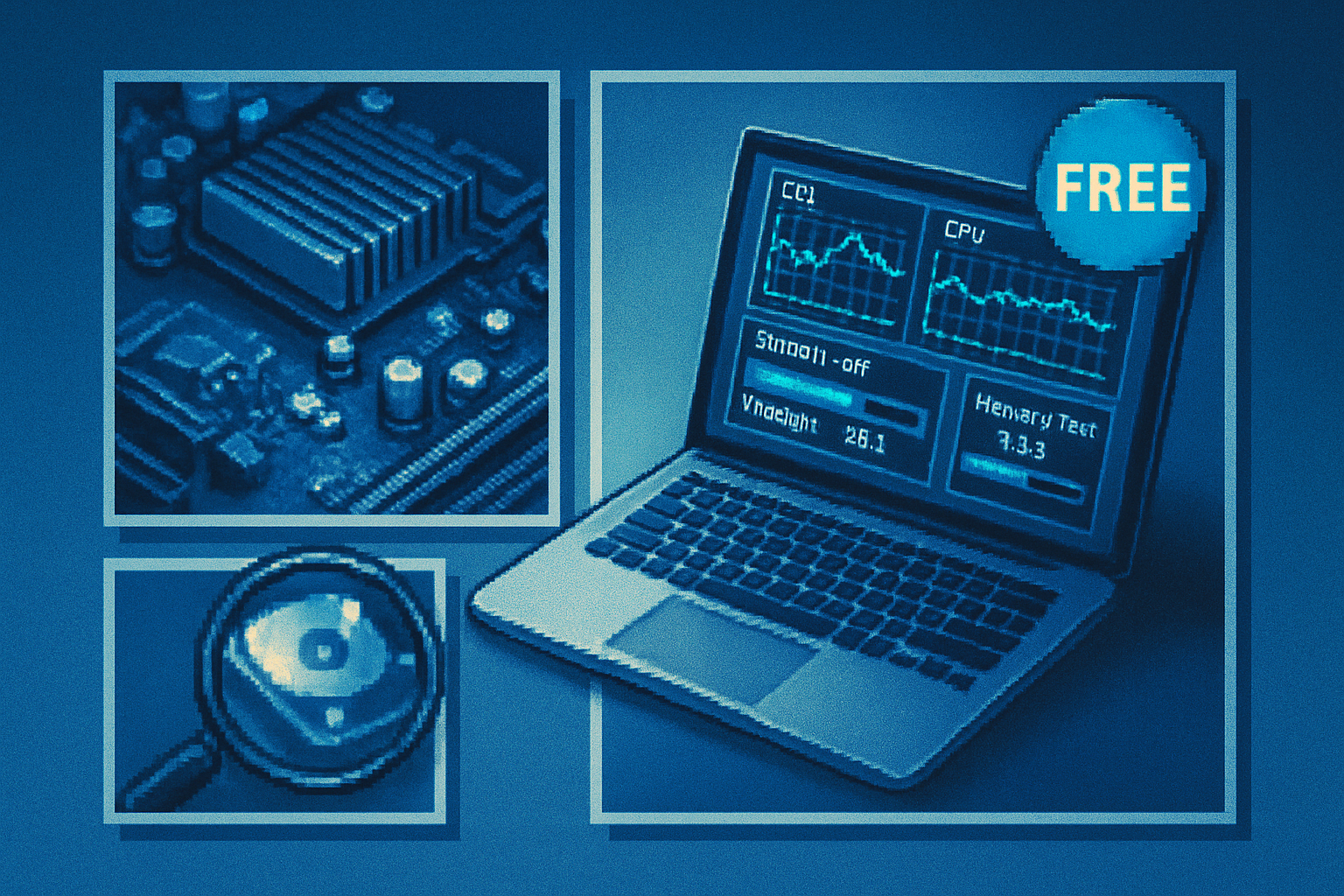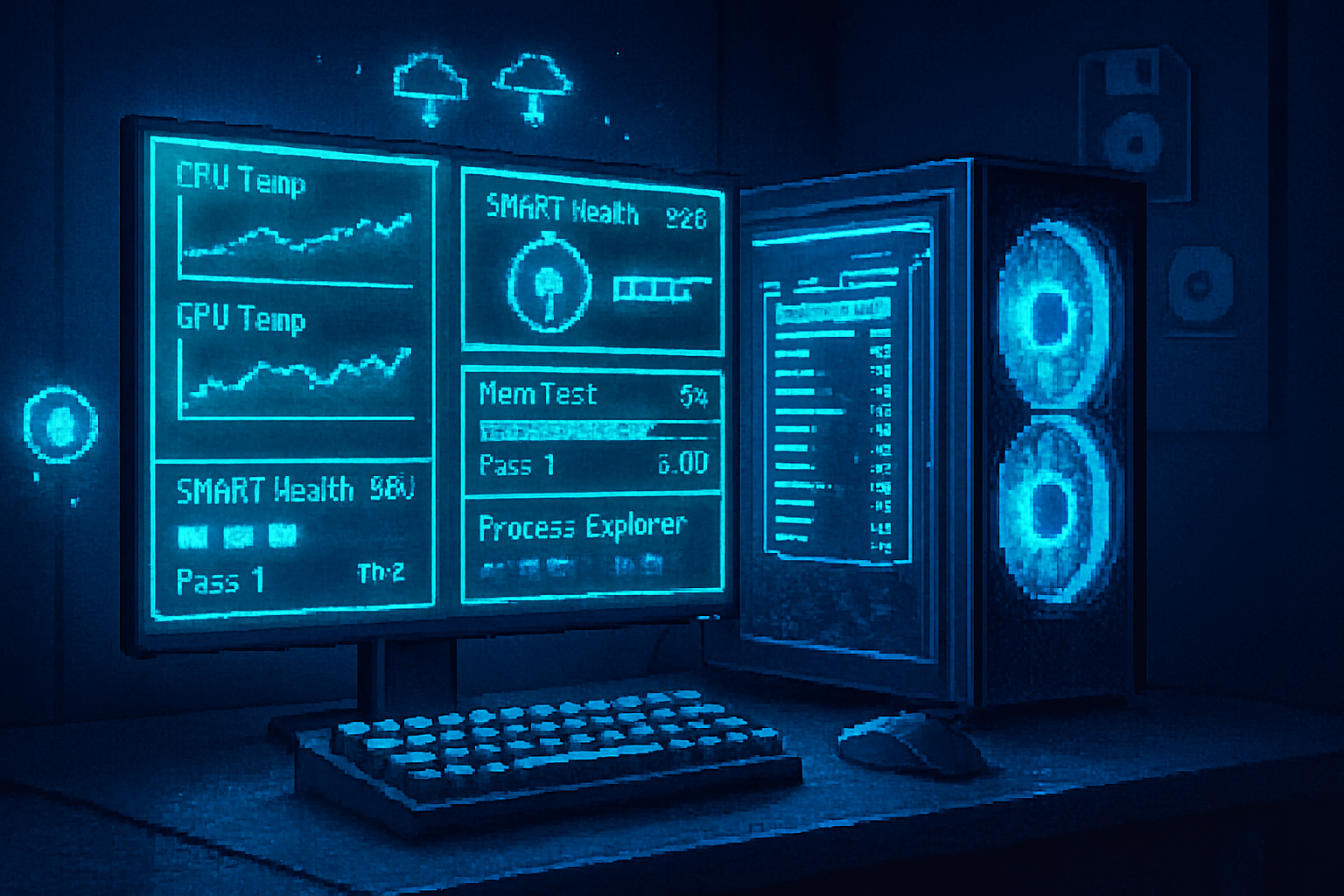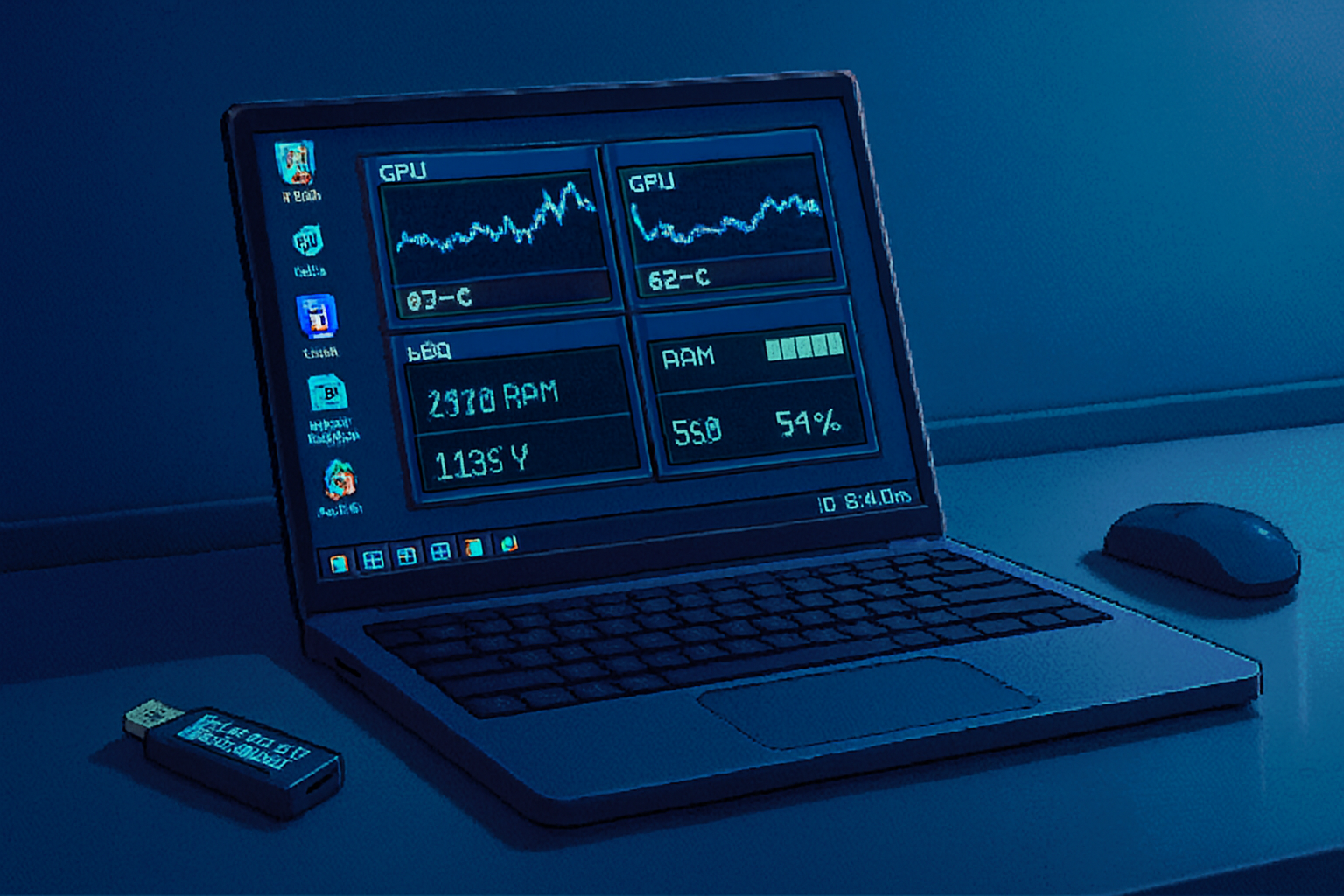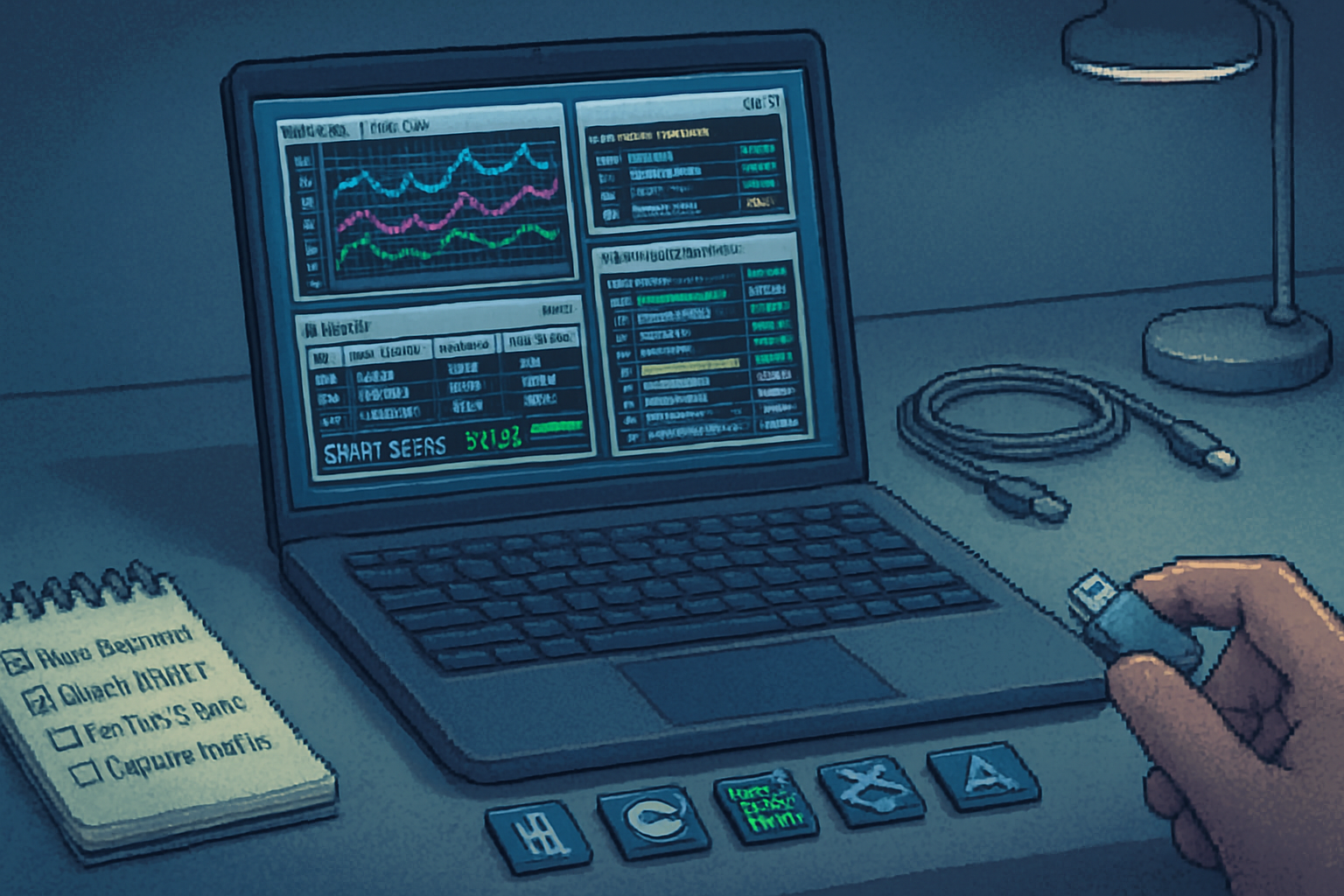· guides · 7 min read
Top 10 Must-Have Features in Free PC Diagnostic Tools: Are You Settling?
Not all free PC diagnostic tools are created equal. This guide breaks down the top 10 features every user should expect from a no-cost diagnostic tool, why each one matters, red flags to watch for, and examples of reliable free utilities that deliver.

Intro
Modern PCs are complex systems. Free diagnostic tools can save time, money, and headaches - but many users unknowingly settle for limited apps that miss critical failures. Below is a practical guide to the top 10 features you should expect from any free PC diagnostic toolkit, what to look for, signs a tool is underpowered or risky, and real-world free tools that implement the feature well.
Why this matters
- Early detection of hardware faults avoids data loss and downtime.
- Accurate diagnostics prevent chasing the wrong problem (software vs hardware).
- Shareable reports speed up support calls and warranty requests.
Top 10 must-have features (and what to expect)
- Comprehensive system inventory (hardware & firmware)
Why it matters
A complete inventory (CPU, cores/threads, motherboard model, BIOS/UEFI version, GPU model, RAM type/slots, storage devices and capacities) is a baseline for any diagnosis and for driver or BIOS updates.
What to look for
- Clear, well-labeled device lists and model numbers.
- Detects multiple storage devices and NVMe drives.
- Shows firmware/BIOS and driver versions and dates.
Red flags
- Vague labels like “Disk 1” without model/manufacturer.
- Missing GPU or integrated graphics details.
Free examples
- CPU-Z (system CPU/GPU info) - https://www.cpuid.com/softwares/cpu-z.html
- HWiNFO (very detailed inventory) - https://www.hwinfo.com/
- Speccy (simple, visual summary) - https://www.ccleaner.com/speccy
- Real-time monitoring (temperatures, voltages, fan speeds)
Why it matters
Thermal or power issues often manifest as intermittent crashes, throttling, or unexplained slowdowns. Real-time monitoring helps correlate symptoms with spikes or drops.
What to look for
- Per-core CPU temperatures, GPU temps, motherboard/VRM sensors.
- Voltages and fan RPMs where available.
- Graphing and logging to review trends over time.
Red flags
- A tool that reports only a single CPU temp or lacks graphs.
- Unrealistic values (e.g., constant 0°C or 1000°C) - likely sensor misread.
Free examples
- HWiNFO (detailed sensors/logging) - https://www.hwinfo.com/
- HWMonitor (lightweight monitor) - https://www.cpuid.com/softwares/hwmonitor.html
- Disk health & SMART analysis
Why it matters
Hard drives and SSDs exhibit pre-failure indicators via S.M.A.R.T. attributes (reallocated sectors, wear leveling, pending sectors). Free tools that read and interpret SMART data help you act before catastrophic failure.
What to look for
- SMART attribute reads and clear status (good/warning/critical).
- Lifetime writes, wear percentage for SSDs, and predicted life where available.
- Option to run short/long self-tests or surface scans.
Red flags
- Tools that only show “OK” without attribute detail.
- Ignoring NVMe SMART data (some tools focus on SATA only).
Free examples
- CrystalDiskInfo (excellent SMART UI) - https://crystalmark.info/en/software/crystaldiskinfo/
- smartmontools (smartctl) for command-line or scripts - https://www.smartmontools.org/
References: S.M.A.R.T. explanation - https://en.wikipedia.org/wiki/Self-Monitoring,_Analysis_and_Reporting_Technology
- Memory testing (RAM integrity)
Why it matters
Faulty RAM produces random crashes, BSODs, application corruption and data errors. A robust RAM test isolates memory errors that look like software faults.
What to look for
- Bootable memory tests that run outside the OS (recommended).
- Long-pass or multiple algorithm tests to catch pattern-specific faults.
- Clear error reporting and address mapping (which stick/slot failed).
Red flags
- Reliance on short, quick tests only; those can miss intermittent faults.
Free examples
- MemTest86 (bootable, comprehensive) - https://www.memtest86.com/
- Windows Memory Diagnostic (built into Windows) - run “mdsched.exe” in Windows
- Stress testing and benchmarking (CPU/GPU/storage)
Why it matters
Stress tests reveal instability under load (overheating, power limits, throttling) and benchmarks provide a performance baseline for comparison.
What to look for
- Safe, configurable stress tests (time limits, target loads).
- Benchmark scores for comparison with similar hardware.
- Clear warnings about potential risks (e.g., increased temperatures).
Red flags
- Tools that force maximum fan/voltage changes or lack safety limits.
Free examples
- Cinebench (CPU rendering benchmark) - https://www.maxon.net/en/cinebench
- Unigine Superposition (GPU benchmark; free basic versions) - https://benchmark.unigine.com/superposition
- Prime95 (torture test for CPU; use cautiously) - https://www.mersenne.org/download/prime95/
- Boot / startup diagnostics and event analysis
Why it matters
Problems during boot or recurring crashes leave traces in event logs and boot timelines. Seeing boot time breakdowns and failure codes speeds troubleshooting.
What to look for
- Integration with system event logs and easy filtering of error/warning events.
- Boot-time profiling (startup duration broken down by driver/service).
- Reliability Monitor or equivalent view to spot regressions after updates.
Red flags
- Apps that ignore event logs and rely solely on user observations.
Free examples
- Windows Reliability Monitor & Event Viewer (built into Windows) - https://support.microsoft.com/en-us/windows/view-reliability-history-in-windows-94f1d2b5-6a62-44c3-9b5b-1b2a3ec7a3d8
- Microsoft Sysinternals Suite (Process Explorer, Autoruns) - https://learn.microsoft.com/en-us/sysinternals/
- Driver and firmware diagnostics (version checks & conflicts)
Why it matters
Outdated or mismatched drivers and firmware commonly cause instability, USB/connectivity problems, or poor performance. Identifying driver dates and vendor mismatches is vital.
What to look for
- Displays driver versions and dates for network, GPU, chipset, storage controllers.
- Alerts for obviously outdated drivers (older than a major release) or unsigned drivers.
Red flags
- Tools that push paid driver updates or install unknown drivers automatically (risking instability).
Free examples
- HWiNFO and Speccy for driver/firmware info.
- Microsoft Update Catalog and vendor sites for verified driver downloads.
- Malware / rootkit and process anomaly detection
Why it matters
Performance and stability issues are sometimes caused by malicious or poorly behaving software. Basic malware scanning and process analysis helps separate hardware failures from compromise.
What to look for
- Integration or recommendation for a reputable offline scanner.
- Process inspection with digital signature info and parent/child relationships.
- Rootkit detection or integration with boot-time scanners when possible.
Red flags
- Bundled, low-quality “antivirus” components with heavy telemetry or forced installs.
Free examples
- Malwarebytes Free (on-demand scans) - https://www.malwarebytes.com/
- Microsoft Defender Offline bootscan (built into Windows) - https://support.microsoft.com
- Sysinternals Process Explorer for process inspection - https://learn.microsoft.com/en-us/sysinternals/
- Exportable logs and professional-grade reporting
Why it matters
Readable export formats (HTML, CSV, XML) and timestamped logs make it easy to hand reports to support reps, forums, or to include in warranty claims.
What to look for
- One-click export of system snapshots and sensor logs.
- Human-readable summaries plus raw data for technicians.
Red flags
- Tools that intentionally obfuscate data or require screen-scraping to share results.
Free examples
- HWiNFO (logging to CSV/HTML), CrystalDiskInfo (reports), smartctl (text output).
- Portability, low system impact, and privacy transparency
Why it matters
A diagnostic tool should be safe to run on unstable systems: portable (no install), low CPU/memory usage, and clear about telemetry and data collection.
What to look for
- Portable builds or bootable ISOs for offline testing.
- Small footprint and the ability to disable automatic updates/telemetry.
- Clear privacy policy and no forced cloud uploads unless opt-in.
Red flags
- Forced installations, background services, or hidden telemetry enabled by default.
Free examples
- Portable editions of HWiNFO and Sysinternals tools - https://learn.microsoft.com/en-us/sysinternals/
- Smartmontools and MemTest86 bootable ISOs for offline testing.
How to combine free tools into a reliable workflow
A single free tool rarely covers every use case. Here’s a compact workflow using widely available free tools:
- Run a quick inventory and sensors check (HWiNFO or Speccy).
- Check disk SMART attributes (CrystalDiskInfo or smartctl).
- Run a boot-time RAM test (MemTest86) if memory errors are suspected.
- Stress-test CPU/GPU briefly to reproduce instability (Cinebench, Unigine, Prime95 - cautiously).
- Scan for malware if performance hits or unexpected processes are present (Malwarebytes / Defender Offline).
- Export logs and sensor graphs, then consult vendor documentation or support.
Quick command examples
- View Windows system information (basic):
systeminfo- Quick SMART status via WMIC (Windows):
wmic diskdrive get model,serialnumber,status- Run Windows Memory Diagnostic - press Win, type “Windows Memory Diagnostic” or run:
mdsched.exe(For Linux users: smartctl from smartmontools and lshw are indispensable: https://www.smartmontools.org/ and https://ezix.org/project/wiki/)
When a free tool isn’t enough
Free tools are powerful, but have limits: vendor-specific diagnostics, full board-level tests, and certain firmware-debugging tools are often proprietary. If you’ve exhausted the free toolset and still have unclear failures, escalate to vendor diagnostics under warranty or a paid professional service.
Checklist: Are you settling?
- Does your chosen tool show per-core temps and graph trends? (Yes/No)
- Can it read NVMe SMART attributes? (Yes/No)
- Does it offer bootable RAM testing and report bad addresses? (Yes/No)
- Can you export logs for support? (Yes/No)
- Is the tool portable or bootable with low system impact? (Yes/No)
If you answered “No” to one or more, you may be settling for a tool that misses critical diagnostics.
Closing notes
Free diagnostic tools today are surprisingly capable. Expect comprehensive hardware inventories, real-time monitoring, SMART analysis, bootable memory tests, and safe stress tests from any toolkit you rely on. Prioritize tools that are transparent about telemetry, let you export logs, and include bootable or portable options. When used together in a disciplined workflow, free tools will resolve most common PC problems - and when they can’t, they’ll give you the evidence you need to escalate effectively.
References and further reading
- Microsoft Sysinternals Suite - https://learn.microsoft.com/en-us/sysinternals/
- HWiNFO - https://www.hwinfo.com/
- CrystalDiskInfo - https://crystalmark.info/en/software/crystaldiskinfo/
- MemTest86 - https://www.memtest86.com/
- smartmontools - https://www.smartmontools.org/
- Malwarebytes - https://www.malwarebytes.com/
- S.M.A.R.T. (Wikipedia) - https://en.wikipedia.org/wiki/Self-Monitoring,_Analysis_and_Reporting_Technology



